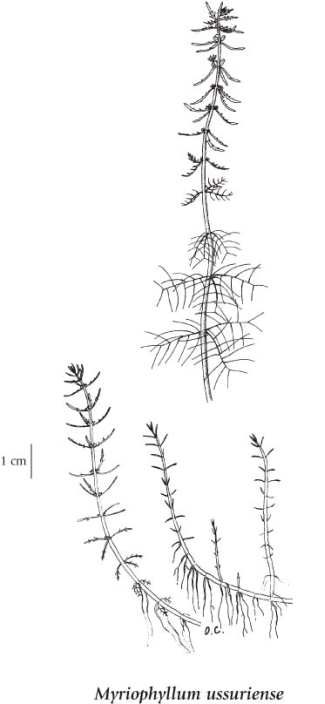Myriophyllum ussuriense (Regel) Maxim.
Ussurian water-milfoil (Russian water-milfoil)
Haloragaceae (Water Milfoil family)
Introduction to Vascular Plants
Ussurian water-milfoil (Russian water-milfoil)
Haloragaceae (Water Milfoil family)
Introduction to Vascular Plants
